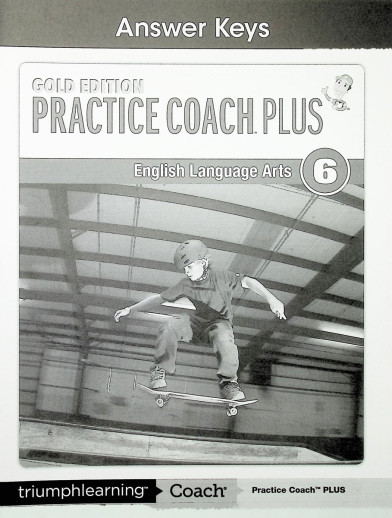We use cookies to make your experience better. To comply with the new e-Privacy directive, we need to ask for your consent to set the cookies. Learn more.
Practice Coach Plus Gold Edition English Language Arts: Grade 6 Answer Keys
At the front of the book, a detailed Skills Correlation Chart shows which 6th grade skills/strategies are practiced in which lessons— making it easy to pinpoint specific content quickly. Also contains an instructional overview, answer keys (including for diagnostic assessments), writing rubrics, and Lexile measures for each reading passage in the workbook. 33 pgs, pb. ~Nancie
Perfect for summer practice, test prep, or supplemental review… these consumable language arts Workbooks help kids to shore up any weak spots and master essential grade level content. Students can jump into the series at any grade level and use alongside any language arts curriculum to deepen understanding of subject matter through step-by-step instruction and practice. Workbooks have black and white newsprint pages and the content, which is aligned with the most common state and new generation standards, is always divided into 4 areas of focus. These include literature, informational texts, writing, and language mechanics. Each lesson targets a specific skill, coaching the student with hints and strategies to help them apply it. Lesson practice includes various exercises (multiple choice, graphic organizers, fill in the blank, etc.) and is divided into two sets for ultimate flexibility. Part 2 features more complex content without as much guidance for students who are ready. Text is written directly to the student, but discussion questions for each lesson allow for rich interaction with the teacher and/or other students in a class setting. Back pages include a glossary of key terms and definitions, rubrics for grading, and diagnostic assessments that can be given before beginning lessons to pinpoint where a student is excelling and/or struggling. Each workbook has an Answer Key booklet that must be purchased separately. ~Nancie


Cute toy to have on had for young visitors